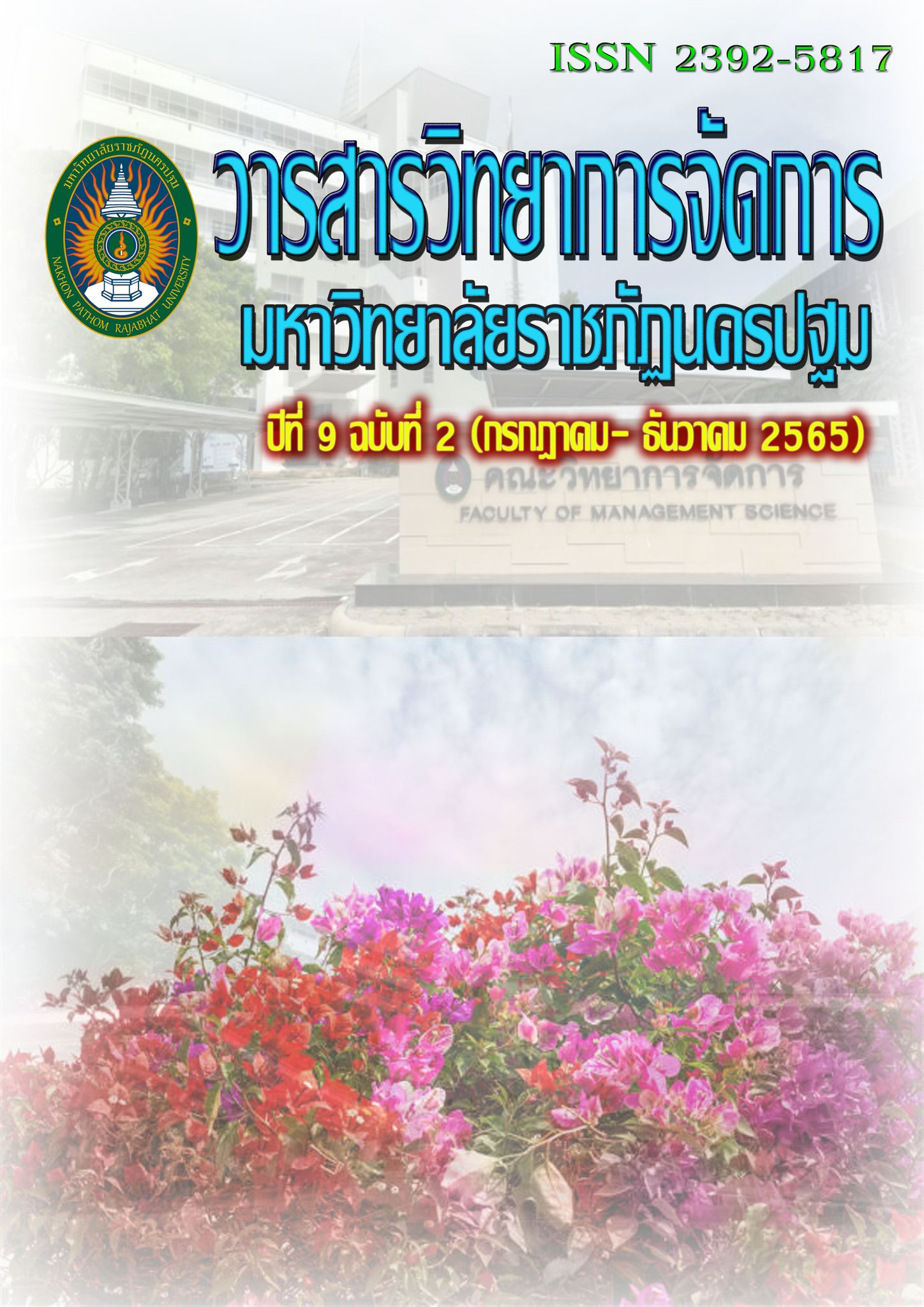A Study of Supply Chain Management System of Maize in Khon Kaen
Main Article Content
Abstract
This research aimed to study the supply chain management system for maize in Khon Kaen province. The research was qualitative research collected from structure interview using 32 key informants, 30 maize farmers, 1 agricultural extension worker, and 1 animal feed processing entrepreneur, which was selected from a purposive sampling. The methods used for data analysis are Fishbone diagram, SCOR Model, and SWOT analysis.
The research results from the in-depth interview findings are as follows: The upstream supply chain of maize in Khon Kaen consists of maize growers, millers, and local aggregators who main produce the maize and improve quality. Then send to a feed mill or a corn starch factory in the midstream supply chain to process maize into end products. After that, in the downstream supply chain the maize will be distribute to consumers. The supply chain analysis results under the dimension of each function of SCOR model are as follows: 1) Planning was a short-term decision or some farmers have monopoly on the company to manage all the plans. 2) In the sourcing process, it is found that farmers tend to procure as much as they wanted and when they needed without the planning. 3) In the production process, it is found the cultivation of maize by farmers in each area depends on rainfall, experience in planting and maintaining. 4) In the delivery process, there are both sell themselves and the company to pick it up at the farm. 5) In the return process, it is no return. The results from fishbone diagram found main problem that prevents maize being sold at low price is humidity. As for the analysis of strengths and weaknesses in supply chains, it was found that farmers were highly experienced. There are groups to build networks and bargaining power with a government and market support. However, they are high production cost and low access to technology.
Article history: Received 20 April 2022
Revised 12 June 2022
Accepted 14 June 2022
SIMILARITY INDEX = 0.00 %
Article Details

This work is licensed under a Creative Commons Attribution-NonCommercial-NoDerivatives 4.0 International License.
The views and opinions of the article appearing in this journal are those of the author. It is not considered a view and responsibility of the editorial staff.
References
ณัฐพล พจนาประเสริฐ อัจฉรา ปทุมนากุล และรวิสสาข์ สุชาโต. (2558). การจัดการโซ่อุปทานเพื่อพัฒนาคุณภาพข้าวโพดเลี้ยงสัตว์. นครปฐม: มหาวิทยาลัยเกษตรศาสตร์.
ธนิดา โขนงนุช . (2557). การศึกษาระบบการจัดการห่วงโซ่อุปทานยางพาราในจังหวัดพิษณุโลก. วิทยานิพนธ์ปริญญาวิศวกรรมศาสตรมหาบัณฑิต สาขาวิศวกรรมและคอมพิวเตอร์คณะเทคโนโลยีอุตสาหกรรม มหาวิทยาลัยราชภัฏพิบูลสงคราม.
ธนิต โสรัตน์. (2550). การประยุกต์ใช้การจัดการโซ่อุปทานโลจิสติกส์. กรุงเทพมหานคร: วี-เซิร์ฟ โลจิสติกส์.
นิอร สิริมงคลเลิศกุล สุรีย์รัตน์ กองวี และเอกวัฒน์ ญาณะวงษา. (2560). การศึกษาต้นทุนและห่วงโซ่อุปสงค์-อุปทาน การค้าข้าวโพดเลี้ยงสัตว์บนพื้นที่สูง ตำบลวาวี จังหวัดเชียงราย. วารสารวิชาการมหาวิทยาลัยฟาร์อิสเทอร์น. 11 (2) ,294-305.
ประจวบ กล่อมจิต. (2556). โลจิสติกส์-โซ่อุปทาน : การออกแบบและจัดการเบื้องต้น. กรุงเทพมหานคร : สำนักพิมพ์ ซีเอ็ดยูเคชั่น.
รุธิร์ พนมยงค์. (2552). เคล็ด (ไม่) ลับจับทางโลจิสติกส์. (พิมพ์ครั้งที่ 2). กรุงเทพมหานคร: มติชน.
วิทยา สุหฤทดำรง. (2549). มองรอบทิศ คิดแบบโลจิสติกส์. กรุงเทพมหานคร : สำนักพิมพ์ อี.ไอ. สแควร์ พับลิซซิ่ง.
วิทยา สุหฤทดำรงค์. (2546). การจัดการโซ่อุปทาน = Supply chain management: strategy, planning and operation. กรุงเทพมหานคร: เพียร์สัน เอ็ดดูเคชั่น อินโดไชน่า.
สำนักงานเศรษฐกิจการเกษตร.(2558).ข้อมูลการผลิตข้าวโพดเลี้ยงสัตว์ย้อนหลัง รายจังหวัด. กรุงเทพมหานคร: กระทรวงเกษตรและสหกรณ์.
สำนักงานเกษตรจังหวัดขอนแก่น.(2556).รายงานผลการดำเนินงานการขึ้นทะเบียนเกษตรกรผู้ปลูกข้าวโพดเลี้ยงสัตว์. จังหวัดขอนแก่น: กระทรวงเกษตรและสหกรณ์.
อลงกรณ์ เมืองไหว กัลยาณี เลาเจริญพร อนงค์นาฏ น้อยประเสริฐ และ บุญญฤทธิ์ มายิ้ม (2555). การศึกษาระบบบการจัดการห่วงโซ่อุปทานมันสำปะหลัง อ.วัดโบสถ์ จ.พิษณุโลก. การประชุมวิชาการข่ายงานวิศวกรรมอุตสาหการ ประจำปี พ.ศ. 2555 17-19 ตุลาคม 2555 ชะอำ เพชรบุรี.หน้า 1938-1944.
Supply Chain Council. (2010). Supply Chain Operations Reference (SCOR) Model: Overview- Version 10.0. Cypress, TX: The Council.

